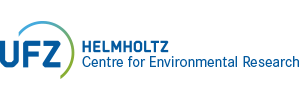Publication Details |
| Category | Text Publication |
| Reference Category | Journals |
| DOI | 10.5194/bg-22-2909-2025 |
Licence  |
|
| Title (Primary) | Impact of stratiform liquid water clouds on vegetation albedo quantified by coupling an atmosphere and a vegetation radiative transfer model |
| Author | Wolf, K.; Jäkel, E.; Ehrlich, A.; Schäfer, M.; Feilhauer, H.; Huth, A.; Weigelt, A.; Wendisch, M. |
| Source Titel | Biogeosciences |
| Year | 2025 |
| Department | OESA; iDiv |
| Volume | 22 |
| Issue | 12 |
| Page From | 2909 |
| Page To | 2933 |
| Language | englisch |
| Topic | T5 Future Landscapes |
| Data and Software links | https://doi.org/10.5281/zenodo.15275610 |
| Supplements | Supplement 1 |
| Abstract | This paper
investigates the influence of clouds on vegetation albedo. For this
purpose, we use coupled atmosphere–vegetation radiative transfer (RT)
simulations combining the library for Radiative Transfer (libRadtran)
and the vegetation Soil Canopy Observation of Photosynthesis and Energy
fluxes (SCOPE2.0) model. Both models are iteratively linked to more
realistically simulate cloud–vegetation–radiation interactions above
three types of canopy, represented by the spherical, erectophile, and
planophile leaf angle distributions. The coupled models are applied to
simulate solar, spectral, and broadband irradiances under cloud-free and
cloudy conditions, with the focus on the visible to near infrared
wavelength range from 0.4 to 2.4 µm.
The simulated irradiances are used to investigate the spectral and
broadband effect of clouds on the vegetation albedo. Changes in solar
zenith angle and cloud optical thickness are found to be equally
important for variations in vegetation albedo. The iterative coupling of both models showed especially that the albedo of canopies with an erectophile leaf angle distribution below optically thin clouds in combination with small solar zenith angles is overestimated when a fixed illumination is assumed. For solar zenith angles less than 50–60°, the vegetation albedo is increased by clouds by up to 0.1. The greatest increase in albedo is observed during the transition from cloud-free to cloudy conditions, with a cloud optical thickness (τ) in the range between 0 and 6. For higher values of τ, the albedo of the vegetation saturates and increases only slightly. The increase in vegetation albedo is a result of three effects that are quantified by the simulations: (i) dependence of the canopy reflectivity on the direct and diffuse fraction of downward irradiance, (ii) the shift in the weighting of downward irradiance due to scattering and absorption by clouds, and (iii) multiple scattering between the top of canopy and the cloud base. The observed change in vegetation albedo due to cloudiness is parameterized by a polynomial function, representing a potential method to include cloud–vegetation–radiation interactions in numerical weather prediction and global climate models. |
| Persistent UFZ Identifier | https://www.ufz.de/index.php?en=20939&ufzPublicationIdentifier=31014 |
| Wolf, K., Jäkel, E., Ehrlich, A., Schäfer, M., Feilhauer, H., Huth, A., Weigelt, A., Wendisch, M. (2025): Impact of stratiform liquid water clouds on vegetation albedo quantified by coupling an atmosphere and a vegetation radiative transfer model Biogeosciences 22 (12), 2909 - 2933 10.5194/bg-22-2909-2025 |
|
